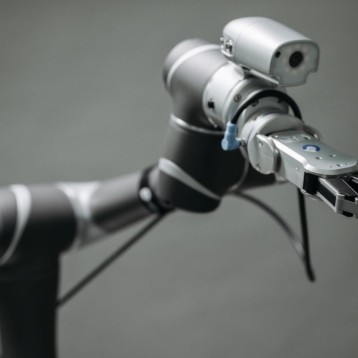|
Designed by Mirko Kovac, the tiny robots use two prongs mounted on the front of each vehicle to grab onto vertical surfaces. When the nose of a MAV hits a vertical surface, the prongs spring forward and stick into that wall or tree. The forward motion of these arms absorbs most of the inertia of the vehicle, preventing any physical damage from the impact. The robots can remain attached to an external surface indefinitely, but a small motor can retract the prongs at any time to free the vehicles from their perches and return them to free flight. This mechanism is repeatable, allowing the MAVs to attach and detach from surfaces at will. To date, a single robot successfully performed a sequence of 110 consecutive landings and takeoffs from a wall.
The prototype vehicle is approximately 5 centimeters tall and weighs about 7 grams. It consists of a main body with an infrared receiver and battery on its back sitting atop the prong mechanism which serves as legs while the robot is on the ground. Despite its small size, the vehicle can jump up to 1.4 meters high. The prong mechanism is completely separate from the body of the vehicle and could conceivably attach to any small robot desiring this type of landing functionality. It works on a variety of materials including both wood and concrete.
Mirko Kovac also designed other biomimetic robots, including a jumping robot modeled after the grasshopper (previously covered by TFOT).
TFOT also reported on other biomimetic robots including an electronics-free robot using the same type of movement used by inchworms, the GhostSwimmer swimming robot based on the Bluefin tuna, a miniature spy plane inspired by bats, an amphibious swimming and crawling robot based on a snake, a climbing robot also modeled after a snake capable of crawling over high stairs and other obstacles, and the RoboClam smart anchor inspired by the razor clam and designed to easily clamp, unclamp, and move backward.
Read more about Mirko Kovac’s miniature flying robot on the official project page.











